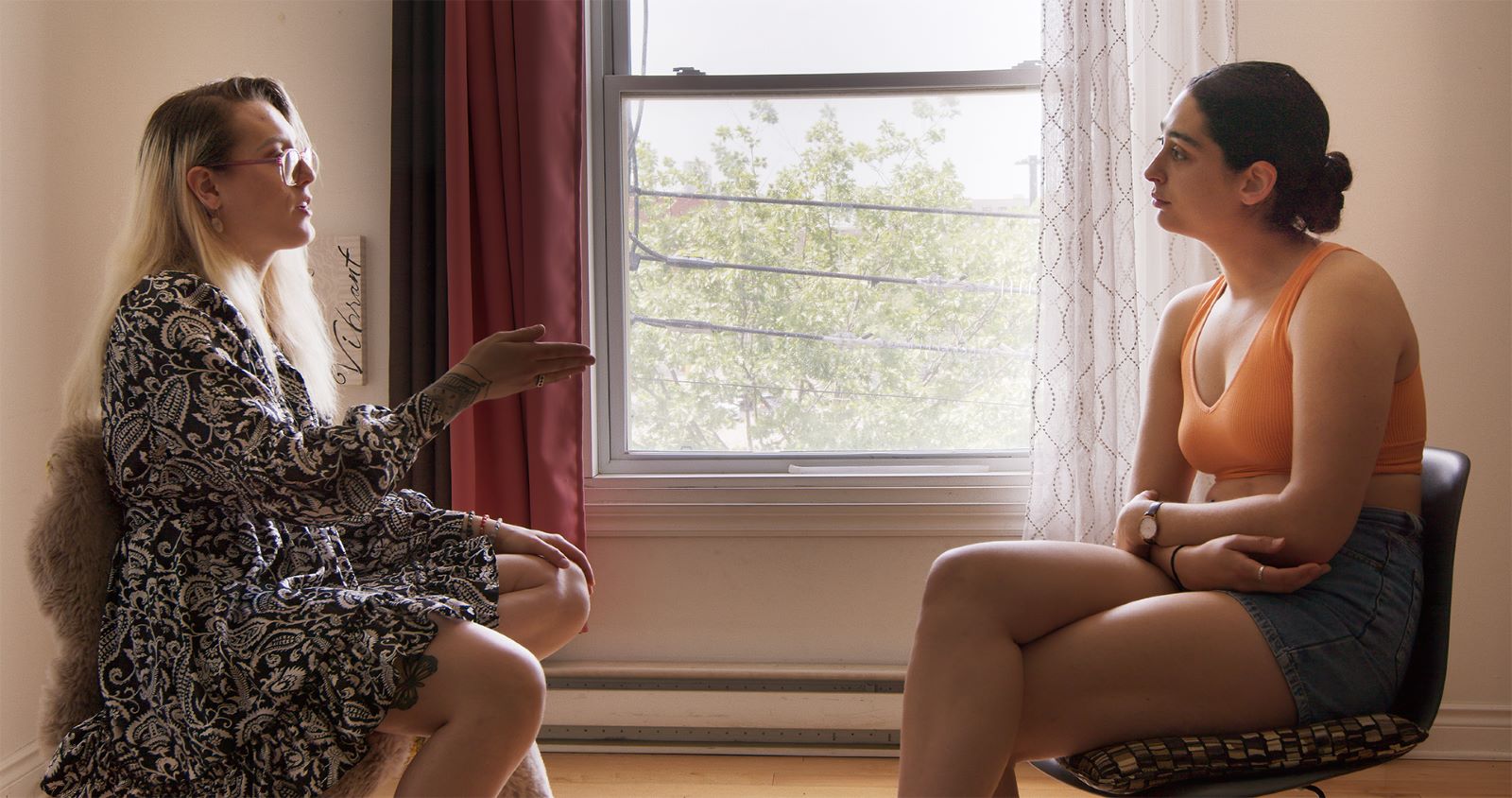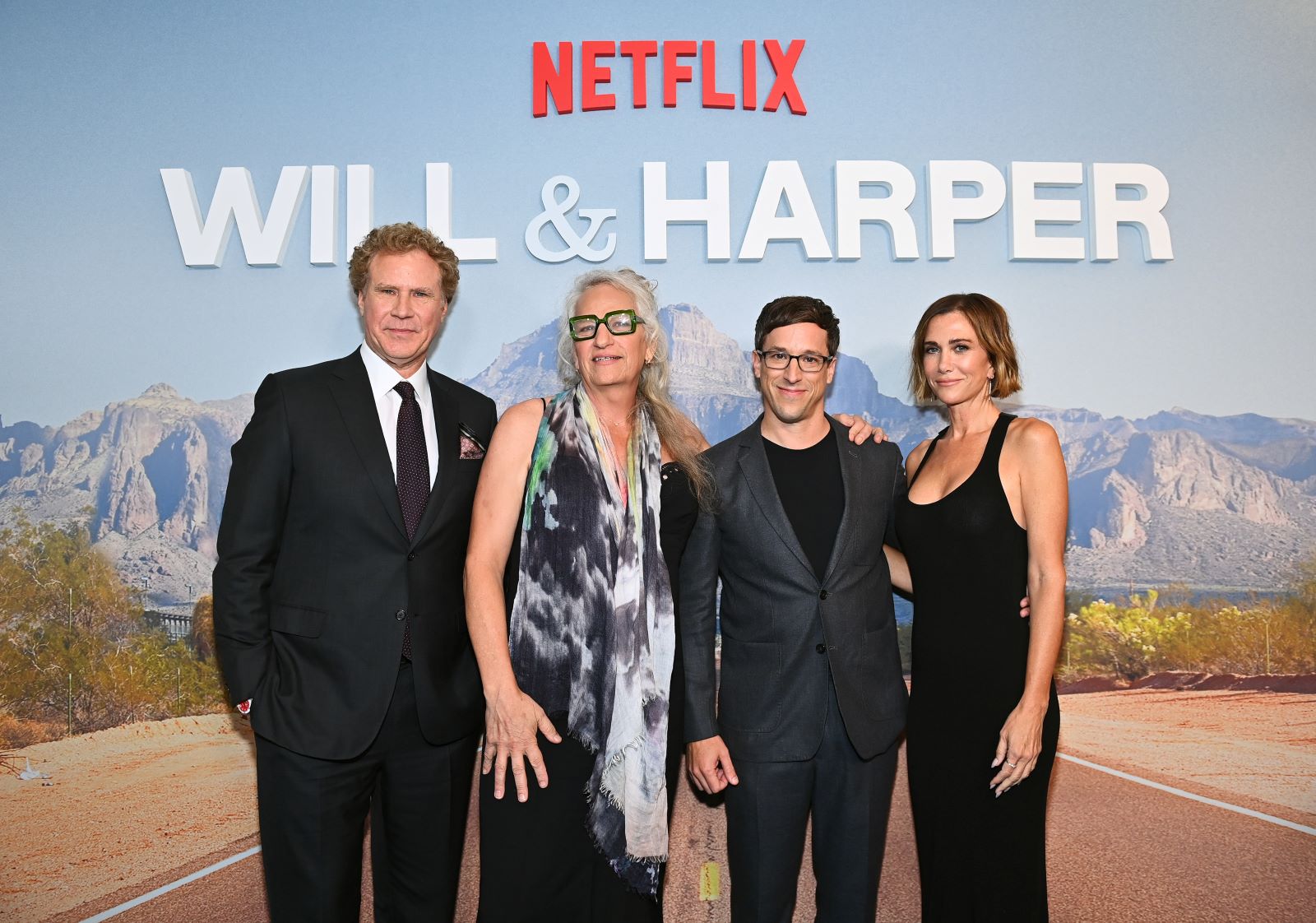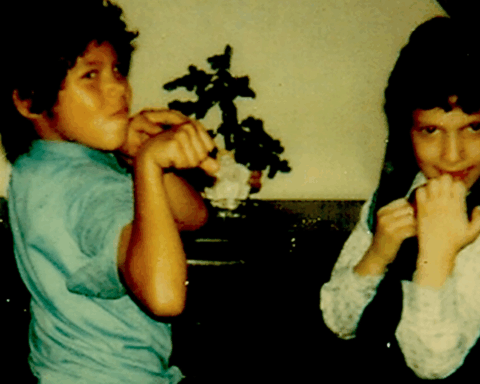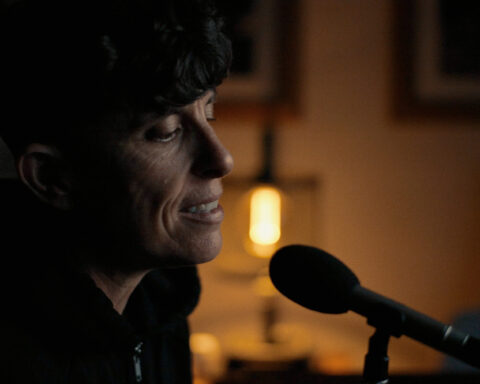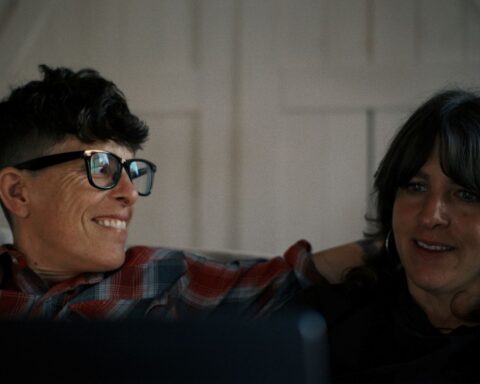When Halima Elkhatabi conceived the idea for Living Together (Cohabiter), she intended for the film to discuss the importance of housing, “[as] a place to feel peaceful and a place of shelter,” she explains to POV over Zoom while on vacation in the Laurentides region of Quebec. “Everything about housing was interesting to me, but I didn’t want to make a movie about the housing crisis. I wanted to talk about it, but not directly.”

To achieve this objective, Elkhatabi decided to film tenants interviewing potential roommates in the hopes of capturing lively discussions about the difficulties found in today’s housing situation. The filmmaker scoured ads on Facebook, considering how much detail someone included in their listing in an attempt to gauge who would get involved in actual conversations, as opposed to a more transactional approach. As expected, Elkhatabi received a lot of “no-thank-yous,” with many, especially those in their 30s and 40s, politely declining her request on account of their jobs and professional image.
Unsurprisingly, the vast majority of those who agreed to participate belong to Gen Z, a generation raised on the internet, who grew up sharing much of their lives online. Elkhatabi attributes this demographic skew to the prevalence of “social media [where] people are used to talking about themselves.”
Over the course of two years, Elkhatabi and her film crew set up cameras in 15 apartments across Montreal, simply observing the interviews as they unfolded. In total, 52 people appear in the film across the spectrum of genders, sexual orientations, and races.
While each conversation features unique subjects and offers a distinctive quality, an underlying commonality persists among all of them: an unapologetic openness that can feel jarring to those of us raised in eras where guarded formality is preferred.
In one instance, two men abruptly ask, “Do you have any mental health issues?” The question and tone are delivered so matter-of-factly, they may as well have been asking if there exists a preference between morning or evening showers. Another group interview led to the disclosure of a polyamorous relationship, lest the interviewee be concerned with different people coming in and out of the apartment. And across town a potential roommate voiced her displeasure with a former roomie for being unwilling to discuss their white privilege.
“This generation is capable of expressing who they are,” Elkhatabi observes. “They have this vocabulary, the diagnostics—and they are not ashamed.”
She continues, “I thought they were going to talk about the housing crisis, but they were talking about so many personal subjects, like physical and mental health and their boundaries. I was surprised with how open they were and the desire to share what they feel.”
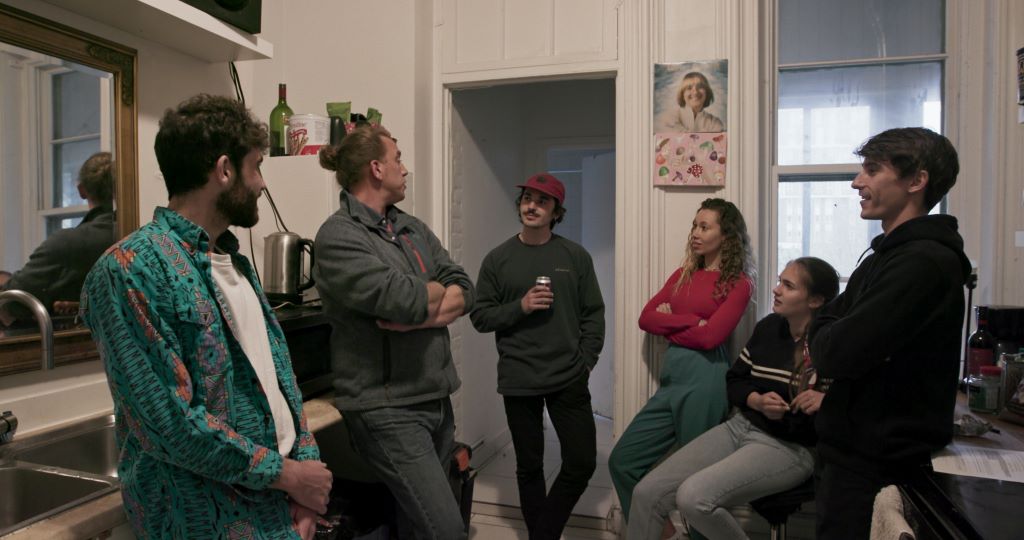
Rather than force her initial idea for the film by suggesting questions or asking her own, Elkhatabi instead let the cameras roll and took a “sociological approach” to the editing, deciding to frame Living Together around these interactions. “As documentarians, we can’t control everything,” Elkhatabi says in considering where her film started and how it ended. “It’s a young generation, it’s the way they talk, what they want to say. We let them express themselves.”
In the last few years, Gen Z has taken up the mantle as today’s insufferable youth. As was the case with all previous generations caught in the crosshairs, the discourse surrounding Gen Z is far more exciting than their reality. Through the quiet observations of Elkhatabi’s lens, an unguarded version of this group presents itself. Online personas fall to the wayside and all that remains is a universal truth: we’re all simply trying to do our best.
For this generation, their best includes standing up for themselves and making space for others to do the same. For those who roll their eyes at Gen Z’s need to categorize and label every aspect of their being, Elkhatabi invites us to consider the benefits of doing so.
One of the film’s more memorable subjects, a young woman with autism, questioned all of her housing suitors if they, too, are neurodivergent, finding it easier to live with people who can empathize with this side of her. Throughout the film we see her interview a number of candidates, some who relate to the challenges and coping mechanisms associated with neurodivergence and others who don’t but express compassion. To the latter, she is quick to nip any pity parties in the bud.
Elkhatabi shares that this individual ended up rooming with another participant in the film, a person of a similar age who is neurodivergent and who remarked, upon seeing a sign language guide posted on the fridge, that they also learned to sign some phrases to use in moments they desired non-verbal communication.
The dialogue used within their conversation feels like something ripped out of a TikTok video or an interaction on X, but it becomes apparent that what some dismiss as woke comes from a genuine desire to create an optimal living situation for everyone.
“We always say, ‘All those young people on social media are so superficial,’” Elkhatabi laments. “But no, they are very present, they know themselves. They’re searching and they’re finding their way.”
In that way, Elkhatabi, although pivoting her film’s focus, still manages to achieve her original goal in stressing the importance of housing—more specifically, in finding a home. Rather than scrambling to fill out a roommate roster and be content with hiding out in a bedroom, a new wave of cohabiting people seeks to lay out all their cards on the table in order to build as supportive a tribe as they can because they must.
Throughout history, technological, social, and political advancements have always established a new world order. Undeniably, though, the changes made in the last decade or so have come at such a breakneck pace that, while many positives have resulted, negative consequences have also arisen, namely the widening of the socio-economic divide, seen most prominently in the housing crises around the world.
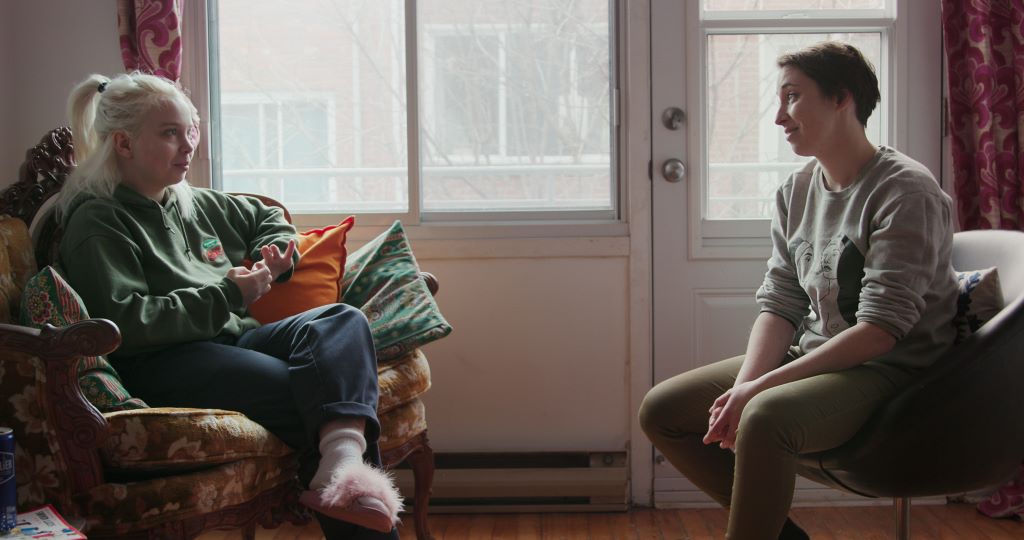
Without ever pointedly discussing the crisis, Elkhatabi’s Living Together captures its knock-on effect in which a generation of people is taking greater care than ever in selecting a roommate. There’s an implicit understanding that, more likely than not, a roommate will be a financial necessity for the foreseeable future. As such, how they prefer to communicate, the lifestyles they currently enjoy, and their respective social bandwidths become crucial details to exchange.
Elkhatabi has screened Living Together for small groups ahead of the film’s premiere at the 2024 Toronto International Film Festival and so far, the filmmaker has noticed that “there are so many subjects in the movie that I think the responses are very open.”
Following one of these screenings, Elkhatabi recalls a woman in her fifties describing herself as “destabilized,” caught off guard by the subject-matter broached. And even for those of us only one generation removed from Gen Z, the topics, and specifically the ease in which they’re introduced and discussed, can feel a bit unsettling to watch. It’s this “destabilized” feeling that lends Living Together one of its more distinguishing features: it’s a film that could only exist today.
The qualities of Gen Z mixed with the circumstances they’ve coped with since they came of age has created lightning in a bottle. We’re at a point in time where some of the most self-aware young people are forced to contend with a world in abject chaos while being grossly misunderstood by those who came before them.
“I’m very happy to have put this to film, because it’s [about] today. In ten years, it’s going to be different. It’s important to capture this,” says Elkhatabi. “It’s a Polaroid of our time.”
Living Together premiered at the 2024 Toronto International Film Festival and screens at additional festivals including VIFF and Windsor.




